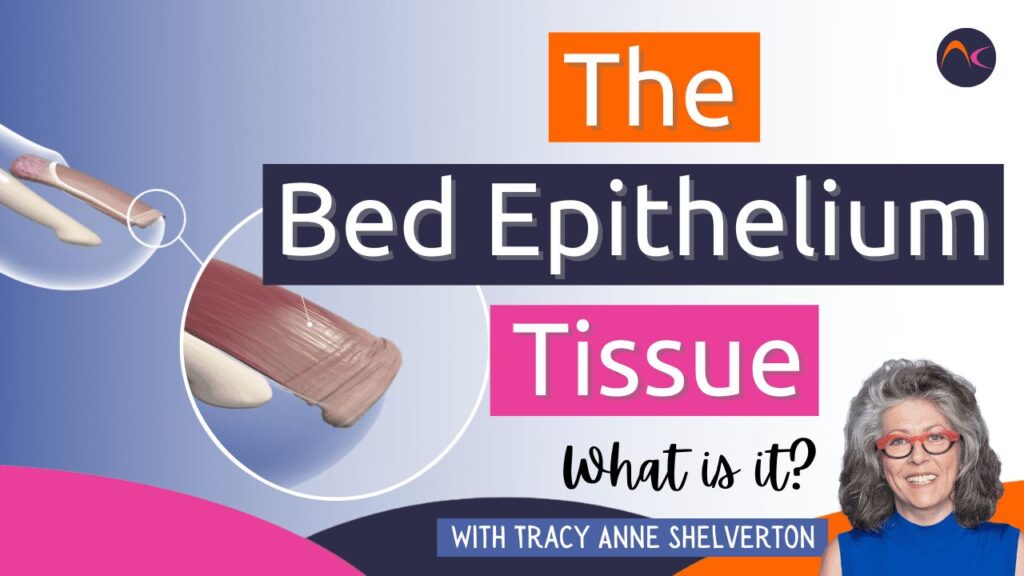Between the nail plate and the nail bed is some elastic tissue called the bed epithelium – it’s kind of the same non-living tissue as the cuticle, only the cuticle is produced by the eponychium and the bed epithelium by the nail matrix. It’s as if the nail plate is sandwiched between cuticle and bed epithelium if you like.
When that bed epithelium remains elastic the nail plate can always transport along the nail bed. If for whatever reason the bed epithelium dries out, psoriasis, lichen planus, eczema, minor trauma, fungus, whatever – then the nail plate cannot travel along the nail bed and it really just won’t do it.
A good way to think about it is the nail plate is like a glacier – it moves in perpetual motion (nail plate cells are made 24/7 by the nail matrix) This motion only continues so long as there is no opposing friction underneath it – when friction happens it crumbles and breaks down. The bed epithelium makes sure there is no friction.
Doing anything else other than using a good quality oil and lotion, will only create more problems and solve nothing. Recover the natural nail plate first and afterwards you can use any product to enhance it and you will have a client for life!
It makes no difference if the dryness is a new problem or 10 years in the making, as long as the nail matrix still produces nail plate cells and bed epithelium you will recover the nail plate – it may not be perfect, but it will be there – oil and lotion is the key.


